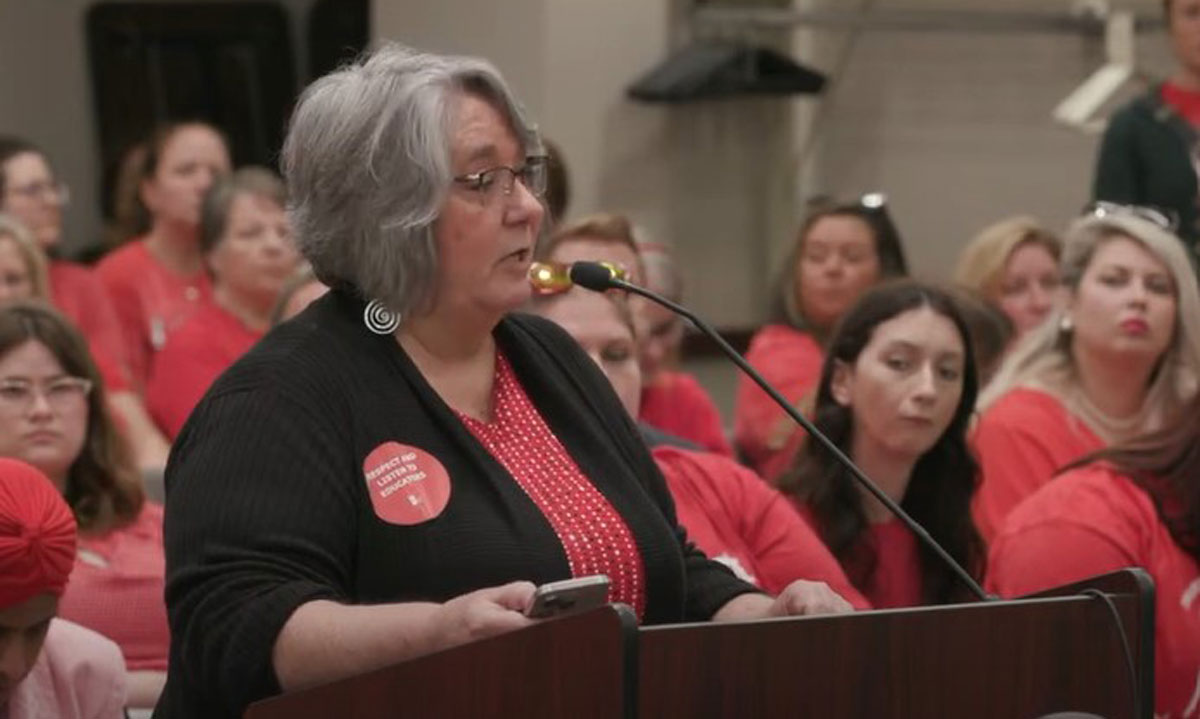Indiana Science of Reading Teacher Training: More Than Most States, But Not All
Teachers call Indiana’s 80-hour training mandate “excessive,” but some states call for much more.

Get stories like these delivered straight to your inbox. Sign up for The 74 Newsletter
The 80 hours of science of reading training Indiana has mandated for teachers, criticized by some educators as too long and unnecessary, is more than many states, but fewer than others.
Indiana, like all 38 states that have adopted the phonics-based approach of teaching reading, has to navigate several challenges to put it in classrooms quickly. It’s not always a smooth change in any state, particularly since veteran teachers must toss aside lessons they have used for years and rapidly learn new approaches.
Indiana legislators, who voted last year to order the shift to science of reading, say the change is urgent and training must be done well to reverse the state’s declining reading scores that had fallen even before the pandemic.
Tempers flared at the May state board of education meeting where teachers criticized the 80 hours of science of reading training required for all preschool through fifth grade teachers as “excessive” and “burdensome.”
Other complaints about a lack of training slots and unwieldy training schedules that added fuel to teacher frustration are easing, as more slots and more flexibility of training times are coming soon.
Indiana’s 80-hour training requirement is on the high end compared to other states. It’s almost four times as long as in neighboring Ohio, for example. But it’s also far from the highest. A few states, like North and South Carolina, are requiring twice as much.
Robert Morris, a teacher in the Duneland school district, told the state board in early May, the 80 hours of training training is unnecessarily “rigorous and time consuming,”
“While no knowledge is a waste, it does seem excessive as a requirement,” Morris said as part of a crowd urged to attend by the Indiana State Teachers Association, the state’s main teachers union.
Dianna Reed, secretary of ISTA, told the board the mandated training has “compounded existing challenges of teacher burnout and retention.”
“Colleagues have expressed they would rather let their licenses lapse at the next renewal date, than be subjected to more hoops and mandates to prove their worth,” she said. “We are already experiencing a shortage of qualified educators and these new requirements do not signal to our teachers that their education degrees obtained…are valued.”
Teachers also complained that the $1,200 stipend the state is offering as compensation for the training amounts to $15 an hour — what retail and fast food jobs pay.
Jeff Raatz, chairman of the Indiana Senate Committee on Education and Career Development did not respond to questions from The 74 about why the legislature chose 80 hours as its mandate.
Robert Behning, chair of the Indiana House Committee on Education, defended requiring 80 hours, noting it is just one of several steps Indiana is taking to improve literacy.
“We want to be the best,” he said.
Behning said 80 hours may seem like a lot, but the state’s not requiring completion until 2027 and only when teachers are renewing their teaching licenses. Teachers whose licenses renew later will have more time.
Behning also said Indiana already requires 90 hours of coursework each time a teacher renews their license. Because Indiana is prioritizing reading, he said, the state will count the 80 hours of science of reading training as fulfilling that entire requirement, saving teachers 10 hours.
“I don’t find it unreasonable when we’re giving them the length of time that they’re being given to do it plus, since we’re counting it for relicensure,” he said.
Setting teacher training in the science of reading for already-practicing teachers isn’t easy. Training time, compensation, and online vs. in-person sessions differ greatly by state.
State law in Arizona and Wisconsin requires less than 50 hours of training for current teachers as they shift to the science of reading, while Florida requires 60 hours, according to experts that track reading laws.
Tennessee also requires 60 hours of training, split between online and in-person.
Some require even less. Neighboring Ohio as well as Washington, D.C., each recently announced that teachers must do 25 hours or fewer of online training as part of the shift.
But some states require more than Indiana.
North Carolina, whose legislature ordered a shift to science of reading in 2021, requires all teachers of kindergarten through fifth grade to do the two year, 160-hour
Language Essentials for Teachers of Reading and Spelling (LETRS) lessons from Lexia Learning that many educators consider the gold standard program in science of reading methods.
South Carolina also just approved in March full LETRS training for all K-3 teachers. That decision openly copies Mississippi, which also gave LETRS training to all K-3 teachers starting in 2013, as one of several pieces of the so-called “Mississippi Miracle” shift in teaching reading that led to significant score increases.
The Indiana Department of Education did not reply to questions from The 74 about how many teachers need science of reading training, but by some accounts the state’s universities have not been training teachers in reading well.
The National Council on Teacher Quality last year found that while schools like Ball State and Marian University- Indianapolis taught aspiring teachers all the elements of good reading instruction, most didn’t. It graded multiple Indiana University campuses, including Bloomngton with a D or F.
“Indiana ranks among the worst in the nation for the average number of components of reading its programs adequately address,” the council’s national Teacher Prep Review concluded.
While Indiana is requiring universities to change what they teach, the Indiana Department of Education has hired Massachusetts-based Keys to Literacy to provide free training for up to 9,000 teachers to help them adjust their teaching.
Right now, Keys offers training split between 40 hours of asynchronous online classes – those teachers can take any time – and 40 hours of synchronous classes where teachers must join up to 200 others online with an instructor at selected times. That requirement drew criticism from teachers who said it imposes a schedule on time they prepare for classes or have family plans.
When Keys to Literacy opened up new training slots in April, those filled immediately, leaving many teachers thinking they were shut out of a chance at free training. Some worried they’d be stuck paying for other training on their own.
But the legislature removed the synchronous training requirement effective July 1, so teachers can take online training any time that fits their schedule after then.
Jenner and Keys have also opened up fall and spring 2025 sessions, which make more slots and times available.
How the state will pay for extra slots or extra teachers has not been resolved, but Behning said the legislature should easily approve money when it builds a new state budget next year, if needed.
The July 1 end of the synchronous training requirement has tradeoffs, however, in how effective the training can be. Officials of Lexia, Keys and The New Teacher Project, another science of reading provider to several states, say research of all online learning shows that some time with a live instructor brings better results, as teachers saw when they taught online during the pandemic.
Back-and-forth interaction with an instructor and other students is also valuable as teachers start to take the theories behind reading and start finding ways to use them in daily lessons.
Get stories like these delivered straight to your inbox. Sign up for The 74 Newsletter


